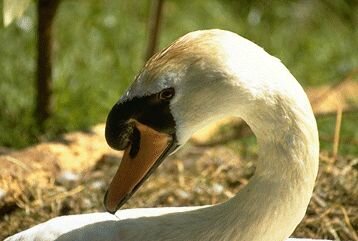 The Mute Swan
The Mute SwanWelcome to the enchanting realm of mute swans! These majestic creatures have long captivated wildlife enthusiasts, conservationists, and researchers alike, including those seeking assistance from dnp dissertation help online. By exploring their intricate behaviors and dispelling prevalent myths, we uncover the fascinating reality of these avian wonders.
Mute swans (Cygnus olor) have maintained an aura of mystique throughout history. Their graceful presence in ponds, lakes, and waterways has spurred curiosity and admiration. Yet, misconceptions often shroud these elegant creatures. This article endeavors to untangle these myths, shedding light on the truth about their lives and interactions.
Mute swans boast a wide geographic distribution, favoring serene bodies of water across Europe, Asia, and North America. Their nesting sites, usually near aquatic vegetation, harbor secrets vital to their survival and propagation.
From fluffy cygnets to fully mature adults, mute swans undergo distinct life stages. Their behaviors, encompassing mating rituals, territoriality, and devoted parental care, reflect a complexity that intrigues researchers and enthusiasts alike.
These avian beauties exhibit specific dietary preferences, but their foraging habits also influence local ecosystems. Unraveling the nuances of their feeding habits unveils their impact on the environment.
One of the enduring myths regarding mute swans is the belief that they form lifelong monogamous bonds. Research conducted by wildlife biologists across various regions indicates that while many pairs do remain together for several breeding seasons, instances of mate-switching or new pair formations aren't uncommon. Factors such as the death of a partner, unsuccessful breeding attempts, or the presence of a more suitable mate can lead to the dissolution of a pair bond.
The perception of mute swans as symbols of serenity and peacefulness often leads to the misconception that they are docile and non-aggressive birds. However, their territorial nature, especially during the nesting season, can paint a different picture. Mute swans display a protective and territorial behavior, particularly when safeguarding their nesting sites and offspring.
The journey of debunking these myths doesn't diminish the captivating nature of mute swans but rather enriches our understanding of their behavioral intricacies. Scientific evidence and field observations provide invaluable insights, prompting a more nuanced perspective on these enchanting creatures.
Through history, mute swans have woven into cultural tapestries, symbolizing various ideals. Understanding their symbolic importance enriches our appreciation of these creatures.
Interactions between humans and mute swans are multifaceted, often posing challenges and conflicts. Managing these interactions and preserving the species requires a delicate balance. Conservation initiatives play a crucial role in maintaining mute swan populations. Understanding their conservation status and mitigating potential threats are essential for their preservation.
The foraging habits of mute swans hold significant implications for local biodiversity and the surrounding ecosystem. Understanding their role within these systems is vital for preserving natural balance. Strategizing coexistence and charting future research directions mark pivotal steps toward ensuring harmonious cohabitation with these creatures while safeguarding their habitats.
In summary, demystifying the truths behind mute swans unravels a world of beauty and complexity. Encouraging accurate knowledge and responsible interaction fosters harmony between humans and these enigmatic beings.